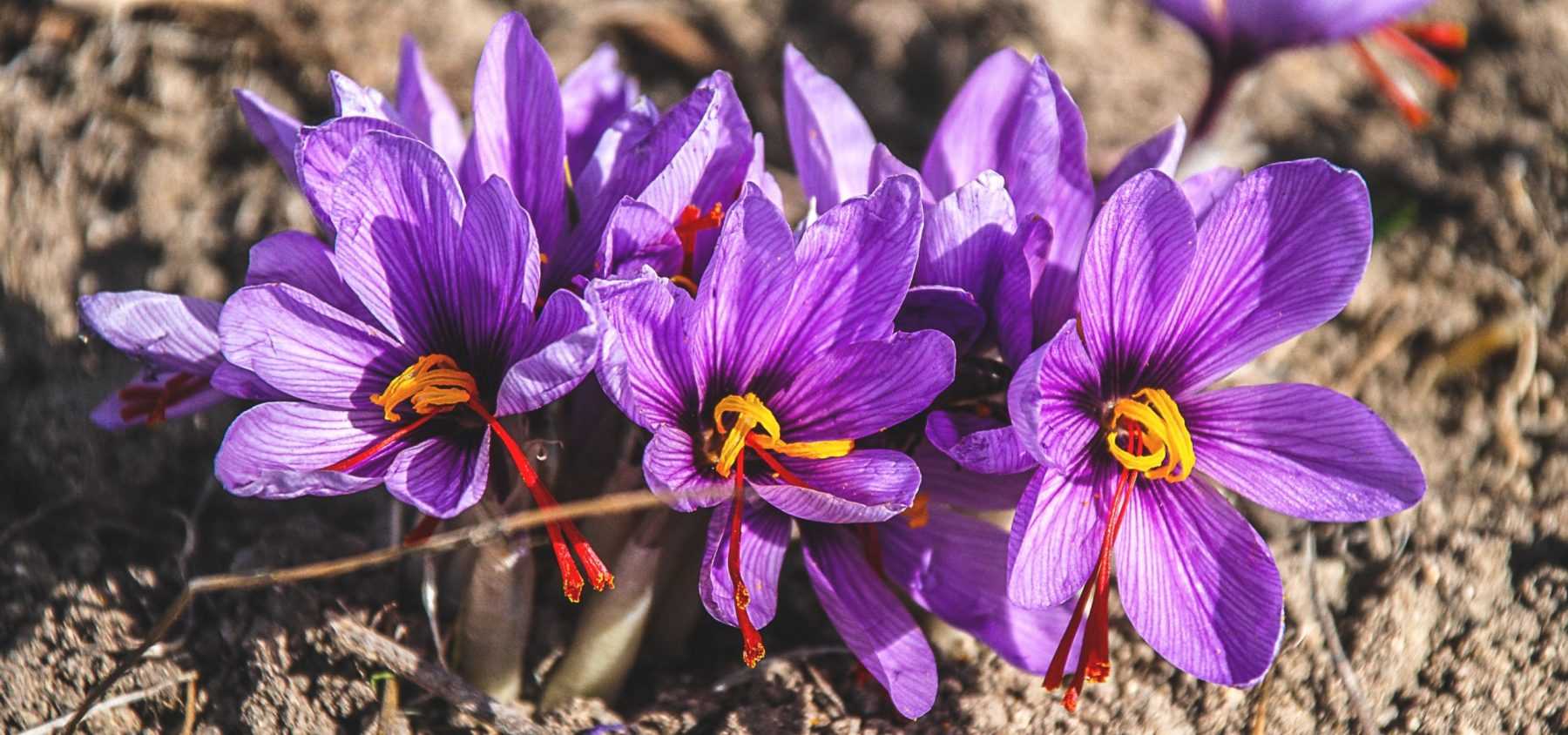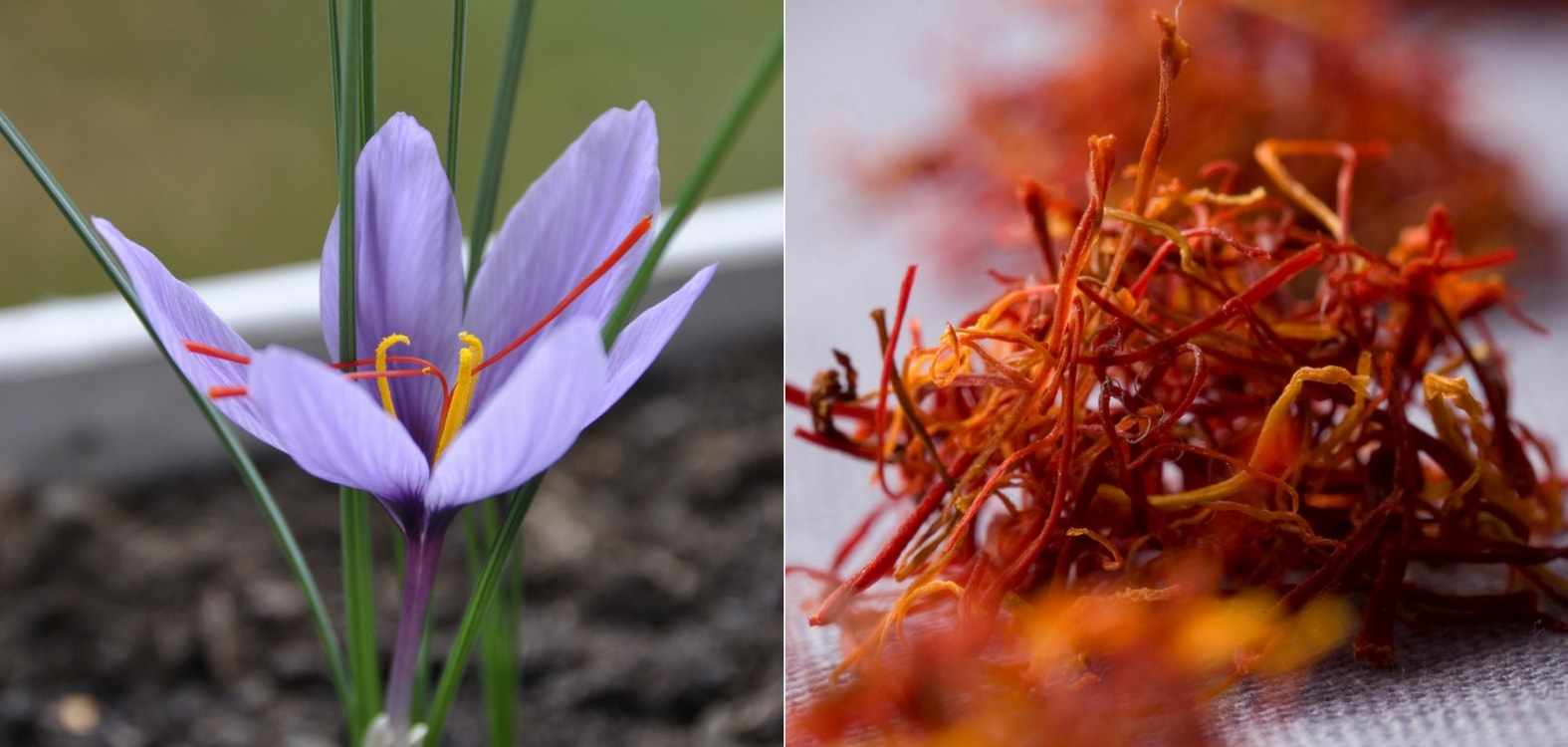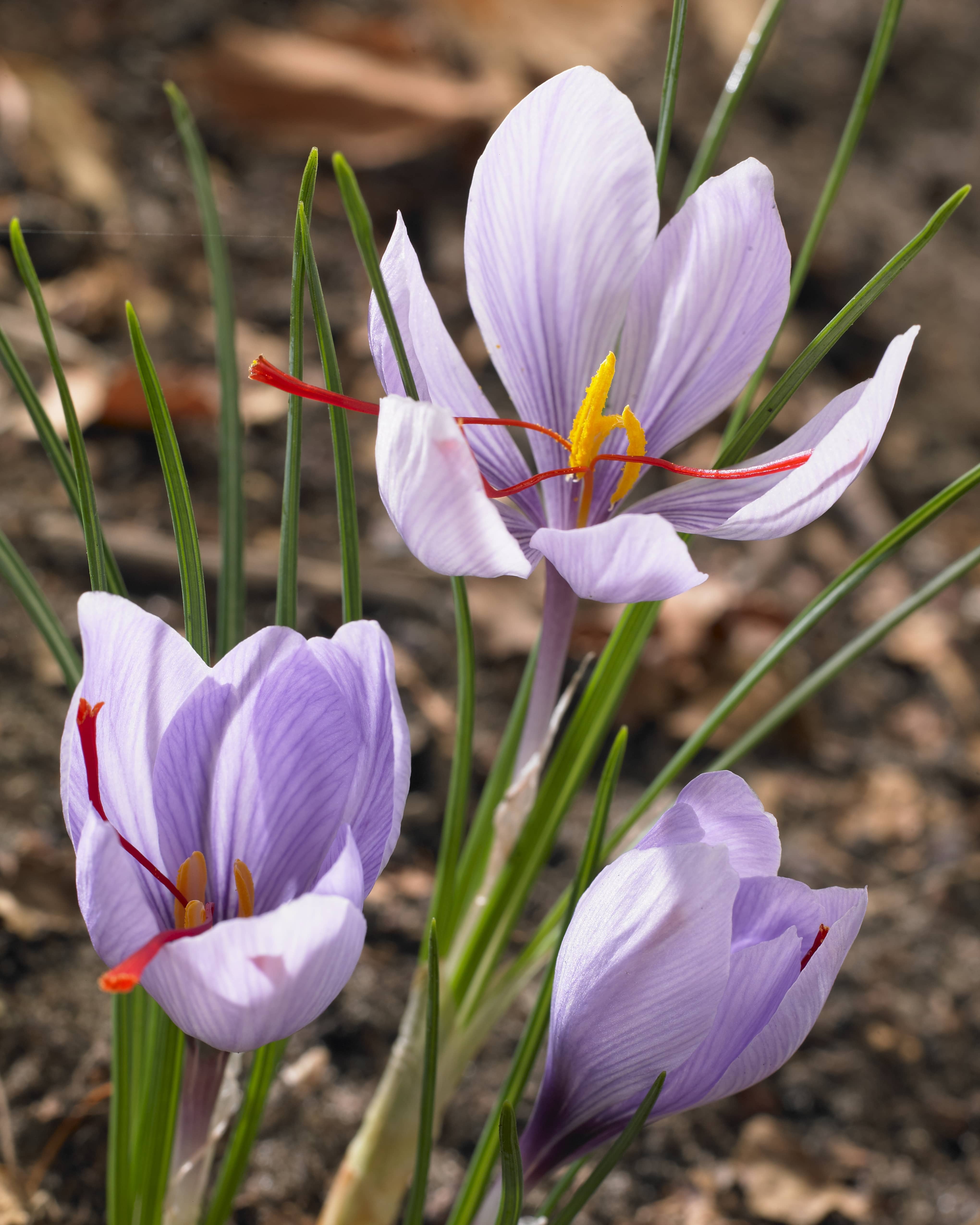
Saffron Crocus or Crocus sativus: Planting, Growing and Harvesting Your Saffron
Our tips for growing this precious spice
Contents
Growing Saffron Crocus, or Crocus sativus, is not very complicated. Its success boils down to three essential points: drainage, sun and patience! Adhering to these three simple conditions will allow you to harvest this rare spice at home and at minimal cost. Discover all our tips for successfully growing saffron crocus, from planting the bulbs right through to harvest!
Where to plant the Saffron Crocus?
The Saffron Crocus or Crocus sativus can be grown almost anywhere in France. It thrives in full sun: opt for south or south-west facing positions. This is a plant that prefers rich, well-drained soil. Indeed, excess moisture, particularly in winter, hinders its proper development and could even, in extreme cases, cause it to rot. Note that it is nevertheless possible to grow saffron in heavy, clay soil… simply by carefully preparing the planting area.
When to plant saffron?
Saffron crocus bulbs should be planted in summer, ideally from July or early August, although planting in September is still possible. The earlier you plant them, the more they’ll benefit from the summer heat to start their growing cycle… and the earlier you’ll harvest! If you can’t plant your bulbs upon receipt, store them in their packaging in a cool, dark place.
How to plant Saffron Crocus?
Before planting, start by carefully preparing the ground:
- Work the soil to a good depth, at least 30 cm
- Add organic fertiliser or well-rotted compost
- If your soil is heavy, be sure to incorporate gravel or fine pumice to lighten it
- You can also place a layer of drainage sand at the bottom of the planting holes.
Once the ground is well prepared, plant your bulbs, either in clusters (groups of 3 bulbs) spaced 15 cm apart, or in rows with one bulb per hole, spaced 8 cm apart.
The recommended planting depth varies depending on your climate:
- If your region is rather warm and dry (continental or Mediterranean climate): bury the bulbs at a depth of 15–20 cm to protect them from heat and drought,
- If your region is rather cold and damp (oceanic or temperate oceanic climate): bury the bulbs at a depth of 10–15 cm to protect them from excessive moisture. However, ensure a minimum depth of 10 cm to prevent frost damage.
Once you’ve planted your bulbs, water them lightly if needed.
If planting in large quantities, to create a proper saffron field, plan for 60 to 80 bulbs per m2, as you’ll need space for pathways during harvest.
Lastly, note that saffron, though best grown in the ground, can also be cultivated in a large pot or planter.
How to care for saffron crocus?
Native to mid-mountain regions, the saffron crocus is particularly hardy. It tolerates summer heat and winter frosts, even severe ones (-10°C), with ease. It can therefore remain in the ground. It requires little to no maintenance, apart from regular weeding. Watering is unnecessary except during prolonged drought or in Mediterranean climates. In such cases, avoid letting the soil dry out excessively, but don’t overwater either!
After flowering, do not cut the long, slender leaves of the crocus: they allow the bulb to regenerate, grow larger, and produce around 3 small bulbils each year, which you can replant to expand your saffron field.
How to harvest saffron?
Saffron harvesting is a lengthy operation that requires patience and meticulous attention. The red gold is well-earned!
It takes place in autumn, from October to November, depending on the region and weather conditions (the flowers bloom when morning temperatures drop below 10°C). The harvest spans several weeks, sometimes even a month.
To harvest your saffron, it’s important to act daily, in mid-to-late morning (once the dew has evaporated), on freshly bloomed flowers.
Depending on the number of plants you have, you can choose between these two harvesting methods:
- Leave the flowers in place and carefully (using tweezers, fine scissors, or your nails…) remove the 3 red filaments from the pistil (stigmas).
- Pick the flowers, using scissors or your nails, bring them indoors, and then extract the red filaments in the same way as the first method.
Note that harvesting from already open flowers is possible, but the saffron then loses some of its culinary qualities… which would be a shame!

How to dry and preserve it?
Once the saffron threads are harvested, they must be dried to preserve them.
To do this, carefully arrange them on a sieve and place it in the sun or in a dry, well-ventilated area.
Drying can also be done in the oven, provided it can be set to a low temperature (maximum 60°C) and has a fan function. The process then takes about 30 minutes.
Once this step is complete, store your saffron in a small airtight jar or a tightly sealed bag, away from light. Your precious spice will retain its qualities for roughly two years.
How many bulbs for what quantity of Saffron?
It is difficult to give a precise answer: in professional cultivation, yields typically range from 1 to 10 kg per hectare depending on the soil, sunlight and bulb size.
For more modest cultivation, 150 bulbs will produce a few hundred flowers, yielding around 3 g of saffron harvested, or roughly 1 g of dried saffron.
For home use, this is already more than enough to flavour several dozen jars of jam or dishes!
- Subscribe!
- Contents


































